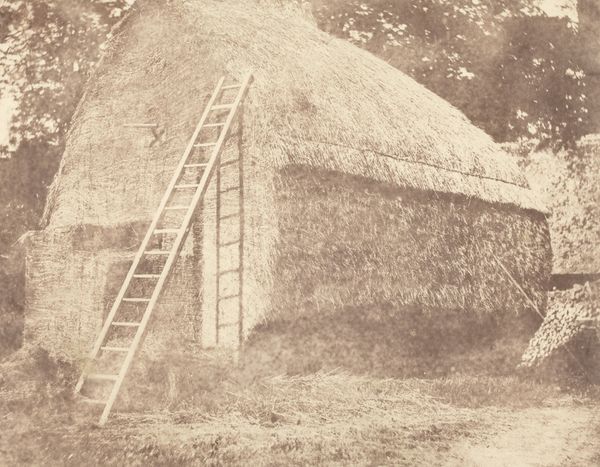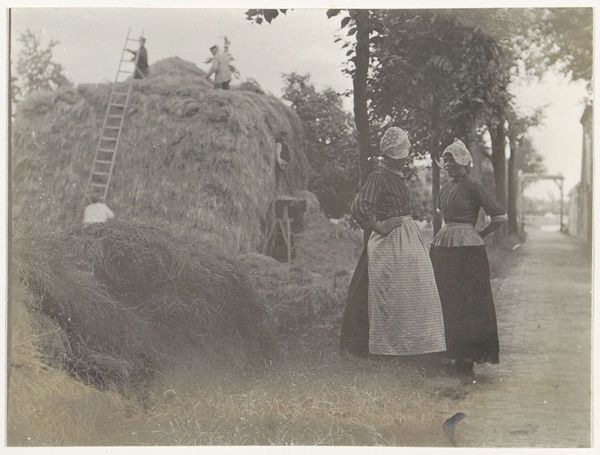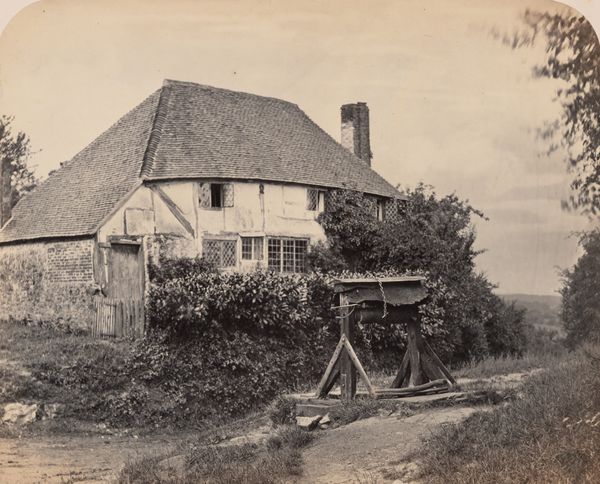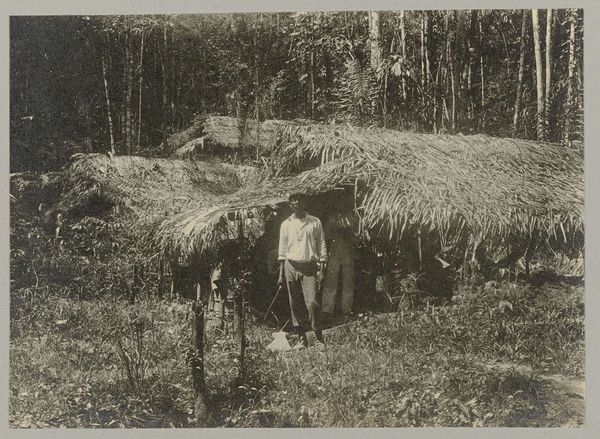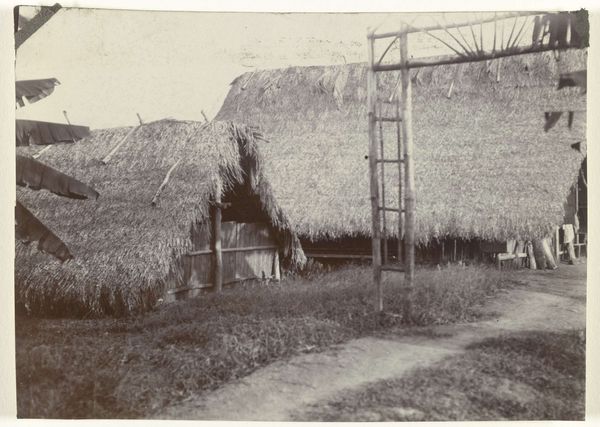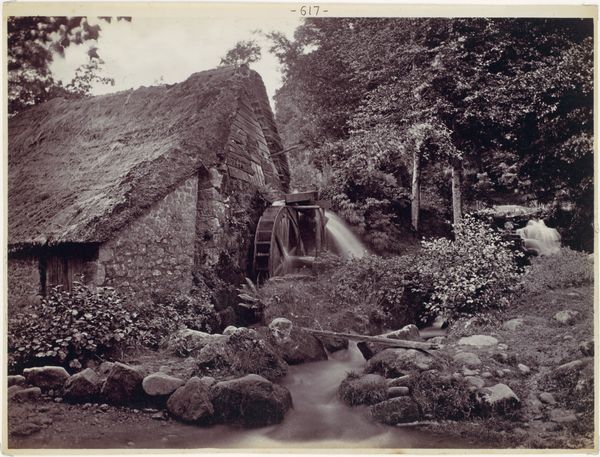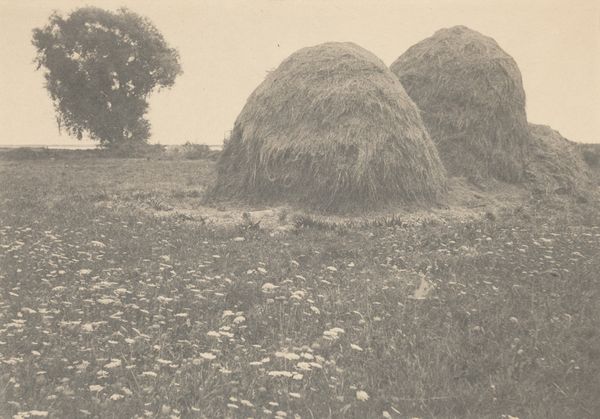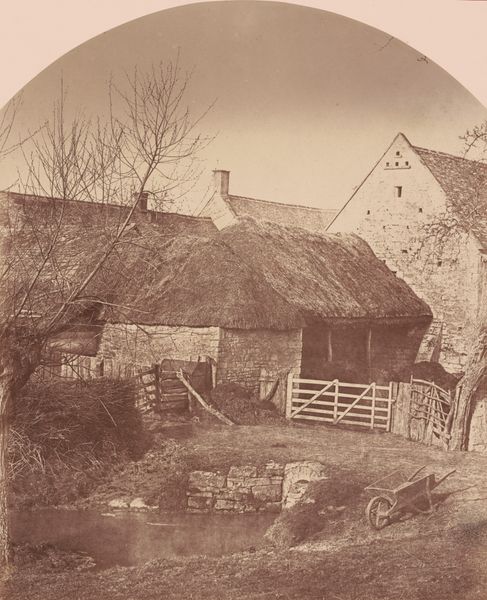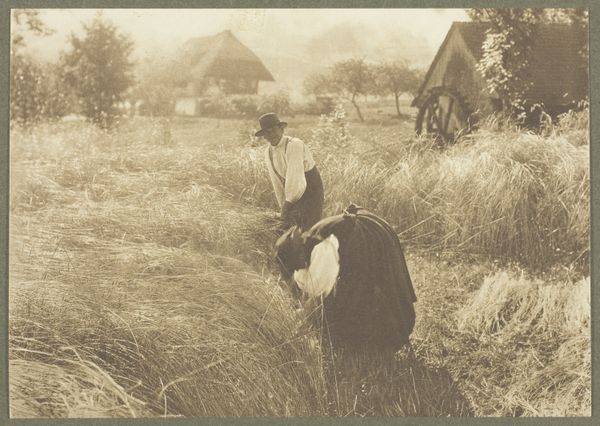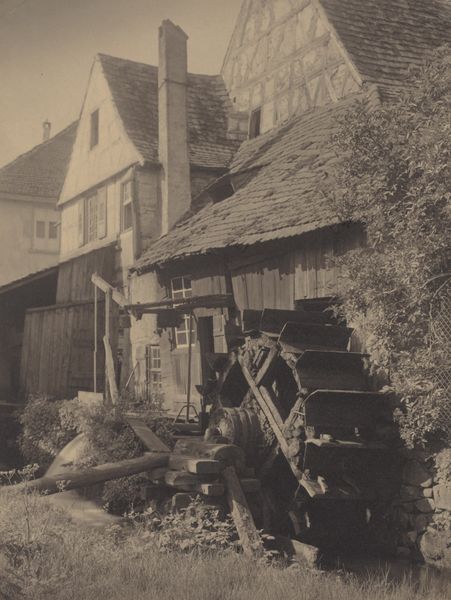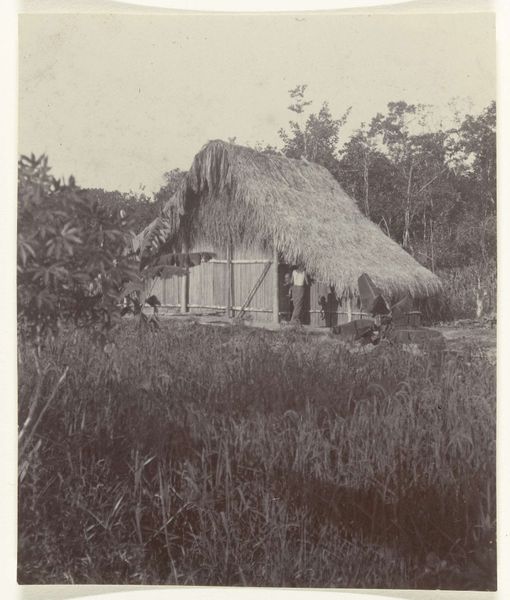
Dimensions: sheet (trimmed to image): 19.5 × 16.2 cm (7 11/16 × 6 3/8 in.) page size: 34.8 × 27.3 cm (13 11/16 × 10 3/4 in.)
Copyright: National Gallery of Art: CC0 1.0
Editor: Here we have Alfred Stieglitz’s photograph, “A Bit of Gutach,” possibly taken between 1894 and 1896. It features three women working in a field, with a large building looming behind them. The scene is serene, but there is a clear emphasis on geometric shapes like triangles created by the women's dresses and by the rooftop. How do you read the formal choices in this piece? Curator: What strikes me most immediately is the tonal range, particularly the contrast between the figures and the ground, which appears rather undifferentiated in texture. The limited palette focuses the eye not on coloristic variety, but rather on line and shape. What appears as "serene" might instead be interpreted as carefully orchestrated, drawing parallels with tonalist painting of the period. Editor: I hadn't considered the orchestration, but I see what you mean, especially with the tonal balance and the almost theatrical arrangement of the women in relation to the structure. The building seems almost like a backdrop. Curator: Indeed. And consider the treatment of light. It isn't used to reveal form in a conventional sense; rather it flattens and abstracts the composition, creating a certain ambiguity about depth and space. How might we interpret this flattening in terms of the photograph's surface and material presence? Editor: It pushes it almost into a more modern territory. I can see an early move toward pictorialism, focusing more on the aesthetic qualities and abstraction rather than strictly capturing reality. So it's not just about documenting a scene in Gutach, but about exploring light and composition? Curator: Precisely. By carefully attending to its formal qualities, we reveal Stieglitz's ambition not simply to record, but to create a self-contained visual experience – an experience liberated, in some sense, from its ostensible subject. Editor: This really makes me appreciate how looking closely at composition opens up the picture in completely new ways! Curator: As it should! Considering formal elements allows us to interpret the artwork more objectively, appreciating it as a study of shape, light and line.
Comments
No comments
Be the first to comment and join the conversation on the ultimate creative platform.
